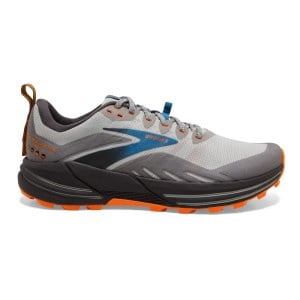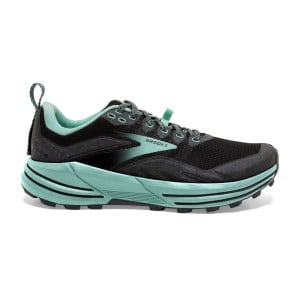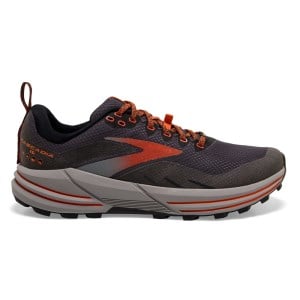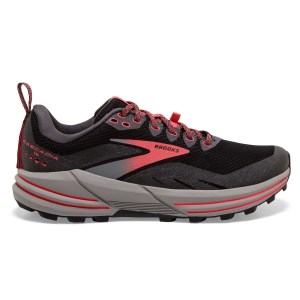Brooks Cascadia 16 vs 15 Comparison Shoe Review
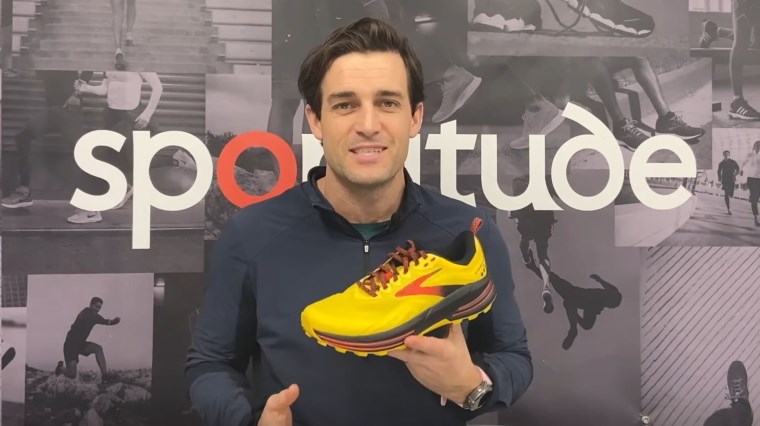
Josh reviews the Brooks Cascadia 16 trail running shoes that provide adventure-ready features in a lighter, softer and more adaptable package than its predecessor, the Brooks Cascadia 15.
With prominent lugs for consistent traction over changing surfaces, it’s made for trail blazers that want to fly over natural terrain without hesitations. Strategically placed vertical slits on the outsole allow the Ballistic Rock Shield to provide protection with a less rigid, more flexible ride.
Brooks have elevated the stack height by 2mm to accommodate their new midsole technology, DNA Loft v2 for a plusher sensation underfoot. The midsole engineering provides compression when and where you need it no matter how your foot strikes the ground - whether you’re pushing uphill or braking downhill.
The trail-worthy upper provides a balance of durability, breathability and structure. With comfort comparable to a road shoe, the supportive heel counter locks your rearfoot in place for a secure fit as you navigate over rocks, gnarled roots or whatever trail hazards you encounter.
Check out the review with full transcript below.
Hey guys, Josh here from Sportitude Running and it’s shoe review time. Today we're going to head to the trails and talk all things Brooks Cascadia 16. This shoe has just landed in Australia in mid-August 2021. There was a small delay with this shoe but the wait has been totally worth it because what Brooks have produced with this model is nothing short of sensational.
With today's review I'm going to break down the shoe with regards to the outsole and midsole, talk about the upper and compare it to where it was with the Brooks Cascadia 15. I’ll give you all the information you need at home to potentially throw this into your trail shoe rotation. Without further ado let's get stuck.
Outsole
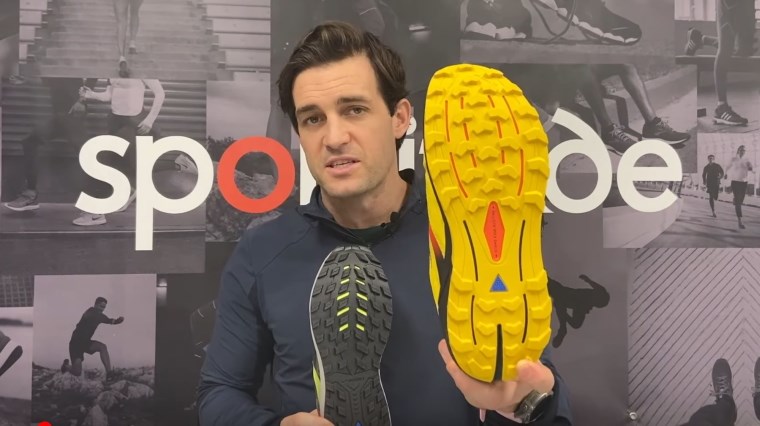
First things first, let's talk about the outsole of the Brooks Cascadia 16. Like you would expect with a trail shoe, there is plenty of grip and larger lugs on offer. In comparing it to the Brooks Cascadia 15 from last year, you can see technically there was more lugs in the previous model. It depends on what sort of surface you're running on and who you are as a runner.
The conversation that we have had with Brooks is that the Brooks Cascadia 16 is going to offer more consistent grip on a larger variety of trail surfaces. We're talking about your fire tracks to your soft, slushy surfaces. Underneath your foot the Cascadia 16 performs a lot better and did perform a lot better in testing for Brooks which is fantastic.
There is multi-directional lugs on offer through the heel and the forefoot. They've removed the lugs through the midsection which is A-OK. There's been no issues with performance in comparison to last year where there was some small lugs on offer. Again, a marginal variance but it could also reduce the weight which it certainly has with this shoe which we'll touch on in two ticks.
The other feature which I like about the outsole is these little vertical slits which are on offer through the rearfoot and the forefoot. That is to provide a slightly more compliant partnership with the Rock Shield plate. They wouldn't remove that from this shoe because it's a vitally important part of trail running and it's been a vitally important part of the Cascadia franchise for a number of seasons now.
The Rock Shield plate is still on offer however you don't get that stiff and rigid feel. It almost feels like a road shoe underneath your body which is a great achievement from a comfort perspective. It's fantastic because the foot itself will work with the midsole and the Rock Plate to keep your miles nice and comfortable out on the trails.
Midsole
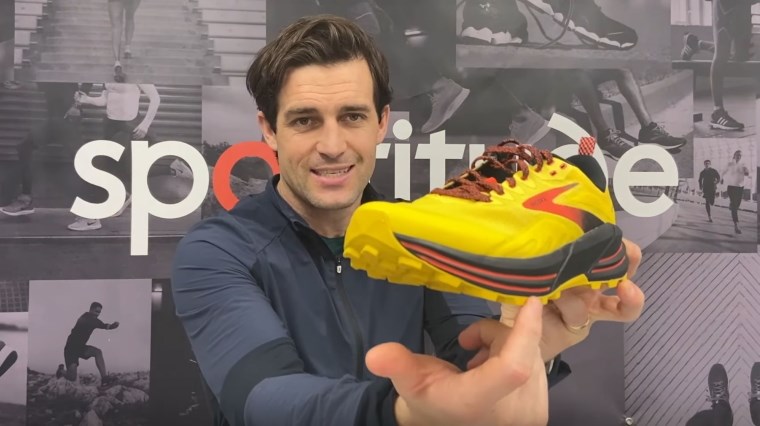
Let’s talk all things midsole. The first thing to call out is the stack height of the Brooks Cascadia 16. We are running a 20mm heel and a 12mm forefoot for a heel-to-toe drop of 8mm. It’s the same heel-to-toe drop as last year, being 8mm, however it was marginally lower. We had an 18mm heel and a 10mm forefoot, so a little bit closer to the ground.
This year they've jacked it up a little bit and the reason they have done that is because Brooks have rolled out their new DNA Loft version 2 cushioning system so it is a slightly softer feel underneath the body. Lifting up the midsole a couple of millimeters gives your foot a bit more protection. If they ran the Cascadia 16 cushioning system on the Cascadia 15 heel-to-toe drop this shoe would wear out probably too quick and it wouldn't be as consistent of a feel underneath your body.
The biggest change in the midsole is the pods. For a number of years when I've been doing these reviews and I've been wearing Cascadias for the best part of a decade, we have these little pods on offer. It's called out with the red pod in the heel and the forefoot on the medial side and the lateral side. They strategically placed them within this shoe to offer a stabilising feel.
If you happen to hit a rock, stick, nook or a cranny on your trail runs and you have that really quick transition from one side to the other, those stabilising pods will help keep the foot on top of the midsole.
That sentence “on top of the midsole” is a great segue to talk about what they have done with the Brooks Cascadia 16. Instead of the foot sitting on top of the midsole, you're sitting within it.
The shoe almost looks like it's a 7mm higher stack than last year, but the midsole itself comes up around the wall of the foot. When I say sitting in it, you are sitting within the midsole so you don't need to use those stabilising pods on either the lateral or the medial side because the walls of the midsole will do the exact same thing, almost like a dynamic support system from your road running shoes.
The other thing I'd like to call out is almost a cosmetic feature. You can see the red lines that run along that forefoot and heel on the lateral side. They also come right around the heel and forefoot on the medial side.
Initially it looks like a cosmetic feature however that actually helps the shoe compress a little bit more, depending again where you hit the ground running on your trails. For those of you who haven't run trails before you are pretty much going to use every part of your foot through some stage of a trail run. Whether you’re heel, midfoot or forefoot running, running uphills or downhills you're going to utilise every part of your foot.
This midsole compresses in the areas you need it to compress in. Again, if you're running uphill we tend to obviously focus more of our grab towards that forefoot. You want the shoe to provide a bit more cushioning through that front half for your impact on your strike zone.
When heel striking or descending down on your heels, you tend to find the heel will make contact with the ground first depending on the angle. Having those little slits will offer a little bit more compression within the midsole which is fantastic. That DNA Loft v2 midsole is really light, nice and soft. It’s a fantastic addition to the Brooks Cascadia 16.
Upper
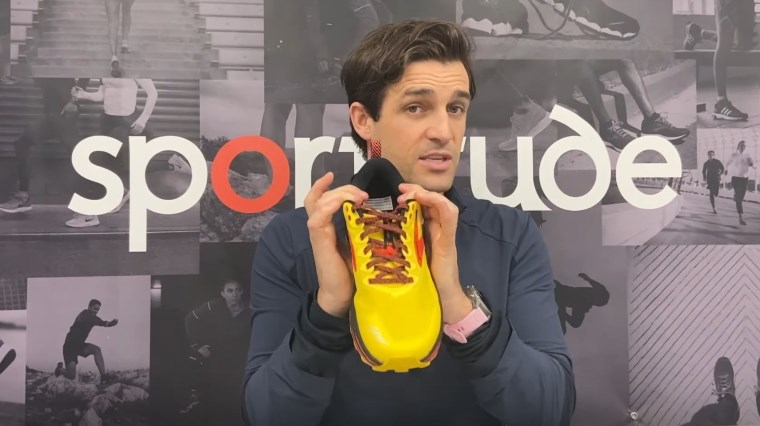
Let’s move to the upper of this shoe. I haven't really had an issue with the Cascadia with regards to the uppers gone by. I think they've always done a pretty darn good job with regards to breathability, support, ventilation and of course that toe guard protection.
When we're looking at the Brooks Cascadia 15, you still have that toe guard protection on offer. However, in the Cascadia 16 we have a little bit more coverage around that forefoot. That's going to help the foot get a little bit more protection, and the end of your toes shouldn't feel those sticks and rocks too much on the trail which is great.
It has engineered mesh through the forefoot so you're going to get plenty of breathability on top. It's not your most breathable trail shoe out there but you don't want it to be because this is almost your mileage trail shoe. You're going be spending plenty of minutes and hours out in the road so you need it to be nice and structurally sound. It offers plenty of support and it's going to be durable from your first K right through to the end of its life.
The tricky part is you still want it to breathe quite well and again, I don't have any issues with regards to what they have done with the Brooks Cascadia 16 with reference to the breathability. It's a nice shoe that’s very light on top.
Coming back through the shoe from the forefoot to the midfoot we have a gusseted tongue. I like that for a trail shoe. It aids the foot sitting on top of the platform so you don't move around as much.
As you're coming back through to the heel, we have the very comfortable lining which is on all of Brooks shoes from road to trail. They should trademark it if they haven't already.
The foam that they use with regards to the lining inside the heel collar is absolutely fantastic. The materials on offer are nice and soft. There’s plenty of plushness going on so that first step in is very comfortable.
As you come back around the heel counter, you want a solid internal heel counter and that is exactly what's on offer. Your foot isn’t going to move around too much on that impact phase of your gait cycle, you’re going to stay nice and locked in.
A cool feature which wasn't on offer from last year is two additional eyelets compared to the last eyelet from the previous model, which did allow you to dial in that heel lock lace.
The reason they have done that is so you can ever so slightly change the depth on offer on top of your navicular. It’s particularly for that person who's running uphill when the arch tends to pitch up a little bit higher, and you don't want to get that restrictive feel on top of the arch which can restrict blood flow. You want to really be able to dial in that lacing system and by doing that with this shoe Brooks have absolutely nailed it.
You can get a heel lock lace with it and it works quite well but just having that additional eyelet allows you the runner to play around with their preferred fit and feel which is great.
The Wrap Up
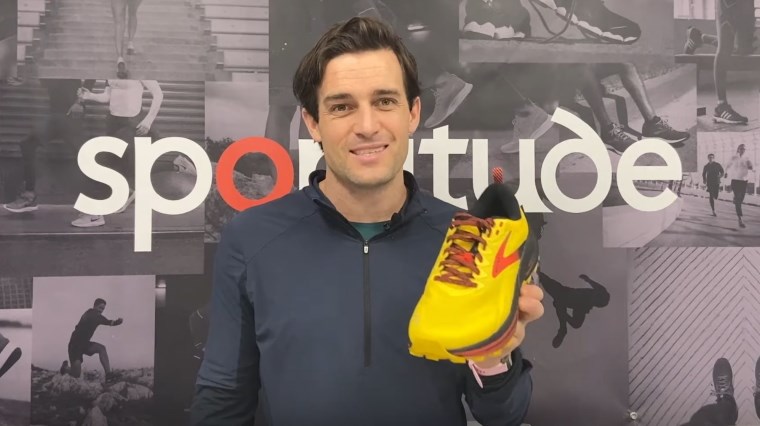
Let’s wrap up the Brooks Cascadia 16. In my opinion it is a huge improvement on the Brooks Cascadia 15. That's saying a bit because I actually like the Cascadia 15. It's an honest shoe, it performed well and it had such a massive following through the trail running community.
That's been the case for the Cascadia for a number of years now. Brooks made 16 versions of it so they’re going to get it right year in and year out.
I don't think Brooks have gone too rogue with this design because there's been considerable change from the outsole, midsole and upper but it works really well. It has slightly larger lugs for a bit more traction with regards to the grip, and the DNA Loft v2 midsole has performed really well on the trail for myself.
I like the extra 2mm stack, it just feels a little bit more natural. Also with regards to the upper, with a trail shoe like this you can't go too light because it undoes everything that is happening underneath your foot. You need it to still be stable, structured and strong but the element of breathability is vitally important, especially when you're spending plenty of minutes and miles out on the trails.
Talking about the couple of changes within this shoe, the biggest one is the weight. We have almost a 30 gram variance with regards to the men's size 9. It was 330 grams in the Brooks Cascadia 15 from last year and we're coming down to around 300 grams in the Brooks Cascadia 16 so that's a big change.
10% is quite a lot when you're talking about the reduction of weight in a shoe and offering a little bit more. Well done to Brooks, they've obviously nailed the brief with regards to the engineering.
We also need to touch on the widths. The men's model is available in a D and a 2E. The women’s model is available in a B and a D, so standard and broader options are both on offer. Brooks also will roll out of this shoe in a Gore-Tex model so there's plenty of options with regards to the Cascadia franchise in the 16th version.
If you have any questions about this shoe or you've been a Brooks Cascadia wearer gone by, please contact our Sportitude shoe experts. If you have any queries or theories about the shoe and you want us to find out some more information, please let us know and we'll answer the question as soon as we possibly can.
Subscribe to the Sportitude YouTube channel if you haven’t already done so to stay notified and we'll keep pumping out these shoe reviews for you the running community worldwide.
Until next time, stay safe, be kind to one another, happy trails and we shall see you next time. Take care.
FEATURES
- Support: Neutral
- Upper: Mesh
- Midsole: Brooks DNA Loft v2
- Offset / Drop: 8mm
- Heel Height: 20mm
- Forefoot Height: 12mm
Men
- Weight: 298g / 10.5oz
- Width: D (standard), 2E (wide)
Women
- Weight: 269g / 9.5oz
- Width: B (standard), D (wide)

